More from our Historical Collection
Recently we have featured the following items from our Historical Collection.
More information on items in the Historical Collection can be found on the Historical Collections blog.
| Youatt, William (1831) The horse: its history, breeds, and management to which is appended, a treatise on draught. London: Robert Baldwin (13325-1001) |
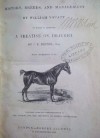 Search our Library catalogue for Isambard Kingdom Brunel, and you will find one entry – for William Youatt’s book The Horse: its history, breeds, and management to which is appended, a treatise on draughtfirst published in 1831. The link to Brunel? Its all explained in our recent blog post Brunel on the power of the horse. Search our Library catalogue for Isambard Kingdom Brunel, and you will find one entry – for William Youatt’s book The Horse: its history, breeds, and management to which is appended, a treatise on draughtfirst published in 1831. The link to Brunel? Its all explained in our recent blog post Brunel on the power of the horse. |
| Hutchinson, W N (1850) Dog breaking: the most expeditious, certain, and easy method: whether great excellence or only mediocrity is required. London: John Murray (13365-1001) |
 Dog breaking includes an image of a dog playing dominos with its owner Monsieur Leonard surrounded by a crowd of onlookers. In the Historical Collection we have another image of a domino playing dog, find out more on our blog post Dogs, dominos and Dickens. Dog breaking includes an image of a dog playing dominos with its owner Monsieur Leonard surrounded by a crowd of onlookers. In the Historical Collection we have another image of a domino playing dog, find out more on our blog post Dogs, dominos and Dickens. |
| Ruini, Carlo (1618) Anatomia del cavallo, infermita, et suoi rimedii. Venice: Fiorauante Prati (14394-1001) |
 Carlo Ruini was born into a wealthy family in Bologna, Italy. His most famous work on Anatomia del cavallo, infermita, et suoi rimedii which translates as The anatomy of the horse, diseases and treatments was first published in 1598 two months after his death by his son. Later editions of the book followed in 1599, 1602, 1607 and 1618. Carlo Ruini was born into a wealthy family in Bologna, Italy. His most famous work on Anatomia del cavallo, infermita, et suoi rimedii which translates as The anatomy of the horse, diseases and treatments was first published in 1598 two months after his death by his son. Later editions of the book followed in 1599, 1602, 1607 and 1618. |
| Foure bookes of husbandrie: collected by M Conradus Heresbachius translated by Barnaby Googe. (1586) London : John Wight (18800-1001) |
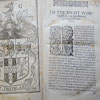 This work was first published in German in 1570 and was later translated into English by Barnabe Googe with the first English edition appearing in 1577. The English copy held in the Historical Collection was published in 1586. This work was first published in German in 1570 and was later translated into English by Barnabe Googe with the first English edition appearing in 1577. The English copy held in the Historical Collection was published in 1586. |
| St. Bel, Charles Vial de (1790) Plan for establishing an institution to cultivate and teach veterinary medicine. London: S Gosnell (16532-1001) |
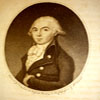 This rare copy of ‘The Plan’, of which there are only a handful of known copies, was donated to the RCVS as part of the NR Turnbull bequest in 1983. Charles Vial de St Bel (Sainbel) (1753-1793) was a graduate of the veterinary school in Lyon. This rare copy of ‘The Plan’, of which there are only a handful of known copies, was donated to the RCVS as part of the NR Turnbull bequest in 1983. Charles Vial de St Bel (Sainbel) (1753-1793) was a graduate of the veterinary school in Lyon. |
| Vegetius, Renatus (1528) Artis veterinariae, sive mulomedicinae libri quatuor. Basle: Ioannes Faber Emmeus Juliacensis (18905-1001) |
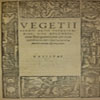 The earliest specific veterinary book in the Collection, and the first ever published, is Artis veterinariae, sive mulomedicinae libri quatuor, which was published by Faber in Basle in 1528. The earliest specific veterinary book in the Collection, and the first ever published, is Artis veterinariae, sive mulomedicinae libri quatuor, which was published by Faber in Basle in 1528. |
| Markham, Gervase (1655) Hungers prevention: or the whole art of fowling by water and land. London: Francis Grove (18506-1001) |
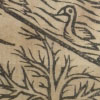 This is a scarce book by the prolific 17th century writer Gervase Markham (1568?-1637). Hungers prevention has seventeen chapters and deals entirely with the different methods of catching wild birds and water fowl to provide food. This is a scarce book by the prolific 17th century writer Gervase Markham (1568?-1637). Hungers prevention has seventeen chapters and deals entirely with the different methods of catching wild birds and water fowl to provide food. |
| Muybridge, Eadweard (1887) Animal locomotion: an electro - photographic investigation of consecutive phases of animal movements; 1872 - 1885. Philadelphia: University of Pennsylvania (15265-1001) |
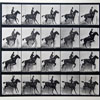 This is the most important non veterinary work in the Historical Collection which is of great importance for both the study of animal movement and the study of the history of photography and early cinema. This is the most important non veterinary work in the Historical Collection which is of great importance for both the study of animal movement and the study of the history of photography and early cinema. |
| Cato, Vano, Columella & Palladius (1514) Libri de re rustica. Venice: Aldine Press (14684-1001) |
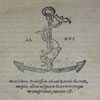 Libri de re rustica was first published in 1482 as a combined volume containing the works of four leading classical authors on agriculture and country affairs. Libri de re rustica was first published in 1482 as a combined volume containing the works of four leading classical authors on agriculture and country affairs. |